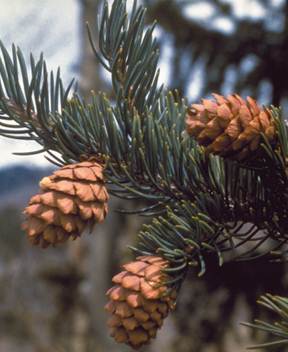

النبات

مواضيع عامة في علم النبات

الجذور - السيقان - الأوراق

النباتات الوعائية واللاوعائية

البذور (مغطاة البذور - عاريات البذور)

الطحالب

النباتات الطبية


الحيوان

مواضيع عامة في علم الحيوان

علم التشريح

التنوع الإحيائي

البايلوجيا الخلوية


الأحياء المجهرية

البكتيريا

الفطريات

الطفيليات

الفايروسات


علم الأمراض

الاورام

الامراض الوراثية

الامراض المناعية

الامراض المدارية

اضطرابات الدورة الدموية

مواضيع عامة في علم الامراض

الحشرات


التقانة الإحيائية

مواضيع عامة في التقانة الإحيائية


التقنية الحيوية المكروبية

التقنية الحيوية والميكروبات

الفعاليات الحيوية

وراثة الاحياء المجهرية

تصنيف الاحياء المجهرية

الاحياء المجهرية في الطبيعة

أيض الاجهاد

التقنية الحيوية والبيئة

التقنية الحيوية والطب

التقنية الحيوية والزراعة

التقنية الحيوية والصناعة

التقنية الحيوية والطاقة

البحار والطحالب الصغيرة

عزل البروتين

هندسة الجينات


التقنية الحياتية النانوية

مفاهيم التقنية الحيوية النانوية

التراكيب النانوية والمجاهر المستخدمة في رؤيتها

تصنيع وتخليق المواد النانوية

تطبيقات التقنية النانوية والحيوية النانوية

الرقائق والمتحسسات الحيوية

المصفوفات المجهرية وحاسوب الدنا

اللقاحات

البيئة والتلوث


علم الأجنة

اعضاء التكاثر وتشكل الاعراس

الاخصاب

التشطر

العصيبة وتشكل الجسيدات

تشكل اللواحق الجنينية

تكون المعيدة وظهور الطبقات الجنينية

مقدمة لعلم الاجنة


الأحياء الجزيئي

مواضيع عامة في الاحياء الجزيئي


علم وظائف الأعضاء


الغدد

مواضيع عامة في الغدد

الغدد الصم و هرموناتها

الجسم تحت السريري

الغدة النخامية

الغدة الكظرية

الغدة التناسلية

الغدة الدرقية والجار الدرقية

الغدة البنكرياسية

الغدة الصنوبرية

مواضيع عامة في علم وظائف الاعضاء

الخلية الحيوانية

الجهاز العصبي

أعضاء الحس

الجهاز العضلي

السوائل الجسمية

الجهاز الدوري والليمف

الجهاز التنفسي

الجهاز الهضمي

الجهاز البولي


المضادات الحيوية

مواضيع عامة في المضادات الحيوية

مضادات البكتيريا

مضادات الفطريات

مضادات الطفيليات

مضادات الفايروسات

علم الخلية

الوراثة

الأحياء العامة

المناعة

التحليلات المرضية

الكيمياء الحيوية

مواضيع متنوعة أخرى

الانزيمات
Conifers
المؤلف:
Dallimore, William, Albert Bruce Jackson, and S. G. Harrison
المصدر:
A Handbook of Coniferae and Ginkgoaceae
الجزء والصفحة:
14-10-2015
3872
Conifers
The conifers are a group of about 588 species of trees and shrubs that include many of the best-known plants in the world. All conifers bear seeds inside cones, woody protective structures. There are seven families of conifers. The largest is the Pine family (232 species), which includes such familiar trees as pine, spruce, fir, and larch. Most plants in this family have needlelike foliage and bear their seeds in a cone formed of papery or woody scales whorled about a central axis. The Pine family includes the oldest known trees, the bristlecone pines, many of which are known to be more than four thousand years old.
The next largest family (147 species) is the Podocarps. Most Podocarps are tropical trees, many of them native to the Southern Hemisphere. Generally, they have broad leaves and bear their seeds in a structure similar to a berry. Nonetheless, their flowers, the anatomy of their wood, and the details of seed development all show that Podocarps are closely related to the Cypress family (141 species).
Most trees in the Cypress family bear scale like foliage and have cones that have only a few scales. Besides cypress, this diverse family includes juniper, a common tree or shrub in desert areas; giant sequoia, which is the world’s largest tree; and coast redwood, the tallest tree in the world. The remaining 68 species of conifers include a wide variety of less well-known trees, such as the yews, which are common garden plants, and the araucarias, which are important timber trees in some tropical countries.
Although the 588 species of conifers are not a very abundant group compared with the 250,000 species of flowering plants, the conifers are ecologically and economically one of the most important plant groups. A few species in the Pine family form the most extensive forest on Earth, the boreal forest, which covers thousands of miles across Russia, Canada, and Scandinavia. One species, the Siberian larch, is the most numerous and widespread of all trees.
Almost all conifers are trees, and so they create forests that provide habi-tat for wildlife and a wide variety of insects, fungi, and smaller plants. Some conifer forests support extremely complex ecosystems with very high levels of biodiversity. Conifers are also very important economically because they provide wood and wood products that are used to make buildings, furniture, and paper. Before petroleum was widely used, conifers were also the source of many important organic chemicals used to make paint and other finishes, solvents, and oils used by industry. Native peoples have used conifers to make houses and necessary implements, and some peoples have even used them for clothing (from woven bark) and food (seeds).

All conifers bear seeds inside cones, woody protective structures.
Conifers are one of the oldest groups of plants, with araucaria-like trees first appearing about 290 million years ago, and primitive representatives of most of the conifer families appearing during the Mesozoic era, from 230 to 68 million years ago. Therefore, conifers, and other types of gym- nosperms, are generally regarded as being more evolutionarily primitive than angiosperms.
References
Dallimore, William, Albert Bruce Jackson, and S. G. Harrison. A Handbook of Coniferae and Ginkgoaceae, 4th ed. New York: St. Martin’s Press, 1967.
Earle, C. J. The Gymnosperm Database. <http://www.conifers.org>.
Van Gelderen, D. M., and J. R. P. van Hoey Smith. Conifers, 2nd ed. Portland: Timber Press, 1986.
 الاكثر قراءة في الأحياء العامة
الاكثر قراءة في الأحياء العامة
 اخر الاخبار
اخر الاخبار
اخبار العتبة العباسية المقدسة

الآخبار الصحية















 "المهمة".. إصدار قصصي يوثّق القصص الفائزة في مسابقة فتوى الدفاع المقدسة للقصة القصيرة
"المهمة".. إصدار قصصي يوثّق القصص الفائزة في مسابقة فتوى الدفاع المقدسة للقصة القصيرة (نوافذ).. إصدار أدبي يوثق القصص الفائزة في مسابقة الإمام العسكري (عليه السلام)
(نوافذ).. إصدار أدبي يوثق القصص الفائزة في مسابقة الإمام العسكري (عليه السلام) قسم الشؤون الفكرية يصدر مجموعة قصصية بعنوان (قلوب بلا مأوى)
قسم الشؤون الفكرية يصدر مجموعة قصصية بعنوان (قلوب بلا مأوى)


















